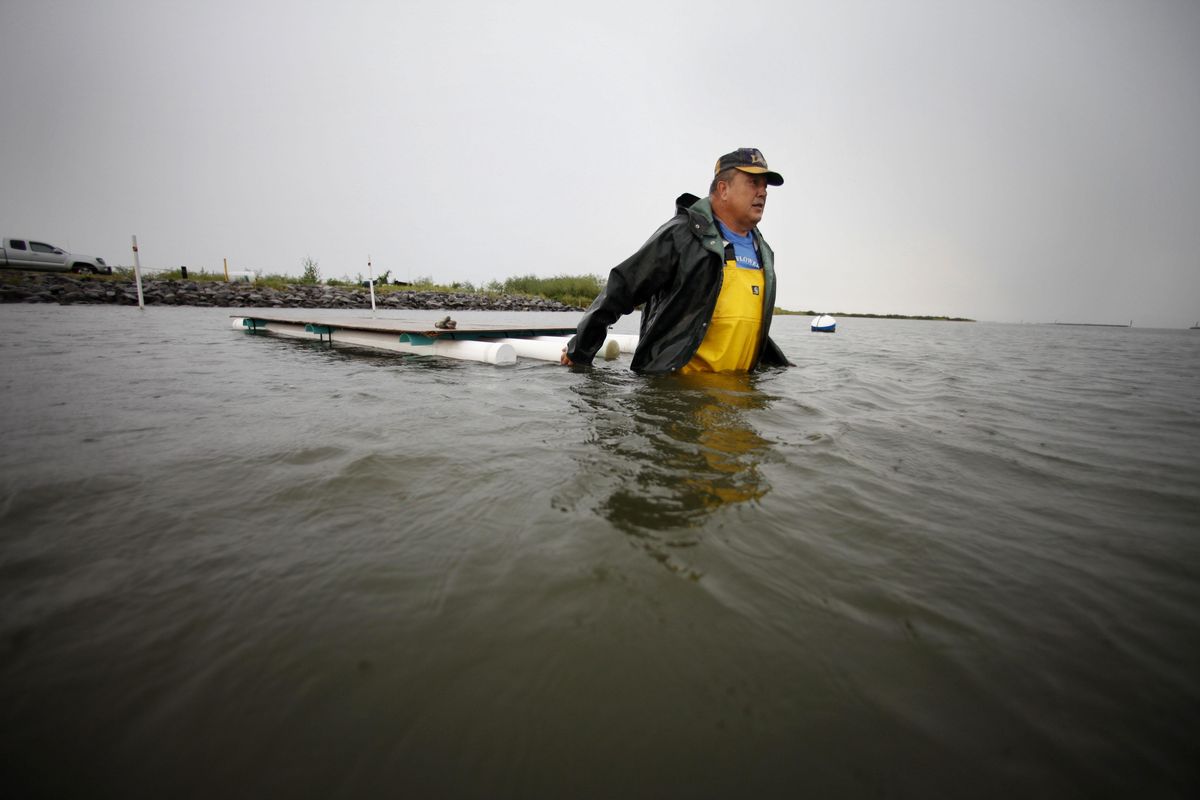Louisiana scientist redesigns the oyster
Breed stays plump, juicy all year and can be relocated if needed

GRAND ISLE, La. – Biologist John Supan thinks he has developed what may be the holy grail for oyster lovers: a hardy breed of the delectable shellfish that stays fat enough for consumers to eat throughout the year.
And unlike many oysters across the Gulf Coast, ruined by BP’s massive oil spill and the fresh water poured in to fight it, Supan’s oysters are all alive.
Now, nearly four months after the spill, Supan’s oysters may offer the Gulf oyster industry a chance for a better long-term recovery. But his special breed of modified oysters, which some say are prohibitively expensive, could be a hard sell to an industry reeling from the BP disaster.
Most oystermen agree that few oysters will be harvested from the Gulf Coast in the next year or two, signaling a potential calamity for shucking houses, oyster farmers and people who love a half dozen oysters on the half shell. As much as 65 percent of the nation’s oysters come from the Gulf.
Oysters are particularly susceptible to pollution, taking longer than fish or shrimp to clear oil contamination from their bodies.
Supan’s oysters are bred for performance, making them more fit to deal with viruses and other contaminants. Being sterile, they don’t go through the stress of reproduction, so they stay fat and juicy all year round. Supan says his oysters are sweet, plump and meaty in summertime when other oysters become thin and watery.
But the most crucial advantage this year was their mobility.
Unlike the vast majority of oysters in the Gulf, which spend their lives on the bottoms of bays and sounds, Supan’s oysters dangle in the water in cages at a hatchery on the inland side of this island.
When the Deepwater Horizon rig exploded on April 20 just a few dozen miles from his hatchery, the 57-year-old Louisiana State University oyster biologist evacuated his broods to a research hatchery in Alabama and a wildlife preserve in western Louisiana. Then he brought them back.
“In my opinion, this is the most important brood of oysters in the history of the Gulf of Mexico,” Supan says. “But you know, you ask an oysterman that and they will say, ‘Huh?’ ”
He said the day is coming when all the Gulf’s oystermen will know what he’s talking about.
Supan would like to see his special oyster larvae distributed through hatcheries across the Gulf to oyster growers. He said he could start distributing the larvae now.
But a lot has to happen for that to materialize. Ideally, the sterile oysters would be grown in cages in special areas designated as marine farms. And a host of permitting and zoning issues would have to be resolved.
Growing oysters the way Supan does is tricky. They are raised in structures propped up off the water bottom. That requires new harvesting equipment. Oystermen currently use mechanical devices like plows to scour their catch from the Gulf floor. It also would require new permits.
Supan has big plans.
He hopes the state will build an oyster dock where he can teach oyster farmers to grow oysters in saltier Gulf farms similar to his, where the oysters are reared to market size on platforms that thwart predators such as snails and bottom-feeding fish.
“With all these calamities – the hurricanes and the oil spill – we’re five years behind schedule,” he said.